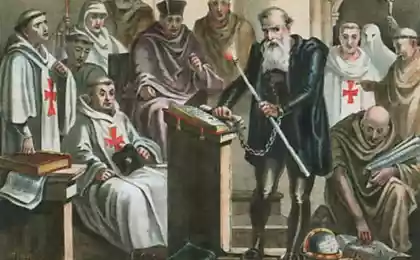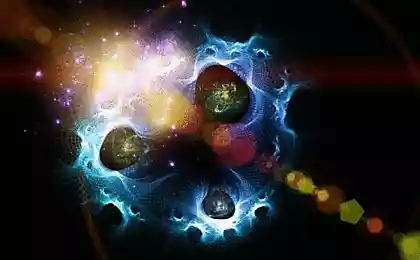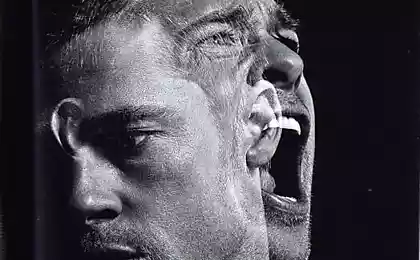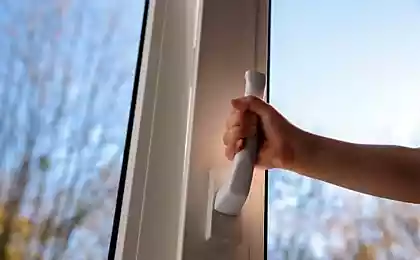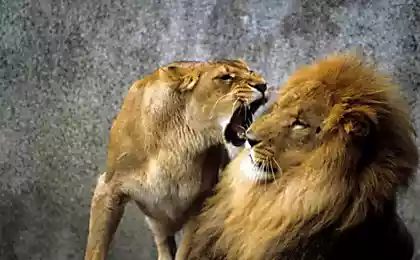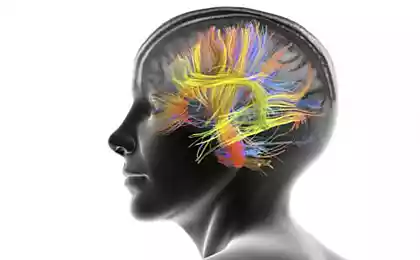1519
Broken windows theory
"Broken windows" - is the brainchild of criminologists Wilson and Kelling.
According to the "broken windows theory" formulated by James Wilson and George Kelling in 1982 (see .: JQ Wilson, GL Kelling. Broken windows), if someone broke the glass in the house and no one put a new, soon no whole window in this house will not.
In other words, clear signs of confusion and non-compliance with the accepted norms of behavior people provoke others also forget about the rules and behave like a pig. The result is a chain reaction 'decent' urban area can quickly turn into a cesspool where people are scared to go out.
They argued that the crime - the inevitable result of the lack of order. If a window is broken and not glazed, then passing by deciding that nobody cares and nobody is responsible for anything. Soon will be broken and the other windows, and a sense of impunity will spread to the whole street, sending a signal to the whole district. Signal calling for more serious offenses ».
Gladwell deals with social epidemics. He believes that a person breaks the law, not only (or even mainly) because of bad heredity or improper upbringing. Of great importance to him is the fact that he sees around.

Dutch sociologists confirm this idea. They conducted a series of interesting experiments. For example, such. With bicycle parking near the store and removed the boxes on the handlebars of bicycles hung flyers. Steel watch - how many people give up fliers on the pavement, and how many hesitate. Wall shop near where parked bicycles, was perfectly clean.
Flyers thrown to the ground 33% of cyclists.
The experiment was then repeated, pre-daubed wall meaningless figures.
Namusorili already 69% of cyclists.
- In other experiments, provoked people to petty theft.
Protruded from the mailbox an envelope with a transparent window from which could see note 5 euros. Experimenters watched people passing by counting the number of thefts. In a situation of "order observed" mailbox was clean, and there was no debris around. In a situation of "order is broken" or the box was painted with graffiti meaningless or circle was garbage. Results and this time received a very compelling.
• In a situation of "order observed," only 13% of passers assigned seductive envelope. However, due to ornament box envelope stole 27% of passers-by, and scattered debris provoked to steal 25% of people.
Thus, meaningless or inscriptions scattered debris increases the number of thefts in half.

But back to New York in the era of wild crime. In the mid-1980s in the New York subway has changed leadership. The new director David Gunn started with ... the fight against graffiti.
Can not say that all of the city public happy idea. "Boy, Have serious issues - technical issues, fire safety, crime ... Do not waste our money on nonsense!" But Gunn was insistent:
- "Graffiti - a symbol of a system crash. If you start the process of restructuring the organization, the first should be a victory over graffiti. Not winning this battle, no reforms take place. We are ready to introduce new trains, worth 10 million. Dollars each, but if we do not protect them from vandalism - we know what happens. They hold out one day, and then they disfigure ».
- And Gunn gave the command oschischat cars. The route for the route. The composition of the composition. Every feature of the car, every single day. "For us, it was like a religious act," - he told me later.
At the end of the routes installed washing items. If the car came with graffiti on the walls, drawings washed away during a turn, otherwise the car in general decommissioning. Dirty cars, from which has not yet been washed away graffiti, under no circumstances do not mix with the clean. Gunn conveyed to vandals clear message.
- "We had a depot in Harlem, where the cars were at night - he told me. - On the first night were teenagers and stained walls with white paint cars. The next night, when the paint has dried, they came and looked contours, and one day it all painted. That is, they have worked 3 nights. We waited for them to finish their "work". Then we took all the rollers and painted over. The boys were upset to tears, but it was drawn in from the bottom up. This was our messidzh to them: "Do you want to spend 3 nights to ensure that disfigure the train? Let Us. But no one sees »...
- In 1990, as chief of the traffic police was hired William Bratton. Rather than engage in serious business - serious crimes, he took up close ... stowaways. Why?
- New police chief believed - and the problem of graffiti, a huge number of "rabbits" could be a signal indication of a lack of order. And it encouraged the commission of a serious crime. While 170,000 passengers made their way to the subway for free. Teens just jumped through the turnstiles or broke by force. And if 2 or 3 people to game the system, the surrounding (which in other circumstances would not have to break the law) joined them. They decided that if someone does not pay, they too will not be. The problem grew like a snowball.
What did Bratton? He put up near the turnstiles 10 plainclothes policemen. They snatched "hares" on one, put handcuffs on them and lined up in a chain on the platform. There were stowaways until completed "big catch". They were then escorted to a police bus, which was searched, fingerprinted and punched in the database. Many in possession of a weapon turned out. Others have found problems with the law.
"For the cops it was a real El Dorado, - said Bratton. - Every arrest was like a bag of popcorn, which is a surprise. What kind of toy will fall to me now? Gun? Knife? There is a solution? Wow, after you murder! .. Pretty soon the bad guys are smarter, began to leave the gun at home and pay for travel ».
In 1994, New York Mayor Rudolph Giuliani was elected. He took Bratton of transport management and appointed chief of police of the city. By the way, Wikipedia says that it was the first time Giuliani applied the theory of broken windows. Now we know that it is not. However, the mayor is undeniable merit - he gave the command to develop a strategy throughout New York City.
Police took a fundamentally tough stance with respect to the low-level offenders. Arresting anyone who drank and brawled in public areas. Who threw the empty bottle. Painted the walls. Jump through the turnstiles, begging money from drivers for wiping glasses. If someone urinating in the street, he went straight to jail.
- The level of urban crime began to plummet - as fast as in the subway. The police chief Bratton and Mayor Giuliani explains: "Small and insignificant at first glance, misconduct is a signal for serious crimes».
The chain reaction has been stopped. Through criminal New York by the end of the 1990s became the safest metropolis of America.

All of the foregoing proves a violation of social norms can grow like a snowball, and the need to deal with the first manifestations. Antisocial behavior can quickly become familiar to many, and then the system will support itself. And each of us must keep in mind: giving up on the lawn can of soda or conclusions on the wall dirty word, we contribute to an increase in crime and enhancement of universal beastliness.
- Magic emergency brake load.
Broken windows theory is quite versatile. You can apply it to different areas of life: communication, parenting, work ...

According to the "broken windows theory" formulated by James Wilson and George Kelling in 1982 (see .: JQ Wilson, GL Kelling. Broken windows), if someone broke the glass in the house and no one put a new, soon no whole window in this house will not.
In other words, clear signs of confusion and non-compliance with the accepted norms of behavior people provoke others also forget about the rules and behave like a pig. The result is a chain reaction 'decent' urban area can quickly turn into a cesspool where people are scared to go out.
They argued that the crime - the inevitable result of the lack of order. If a window is broken and not glazed, then passing by deciding that nobody cares and nobody is responsible for anything. Soon will be broken and the other windows, and a sense of impunity will spread to the whole street, sending a signal to the whole district. Signal calling for more serious offenses ».
Gladwell deals with social epidemics. He believes that a person breaks the law, not only (or even mainly) because of bad heredity or improper upbringing. Of great importance to him is the fact that he sees around.

Dutch sociologists confirm this idea. They conducted a series of interesting experiments. For example, such. With bicycle parking near the store and removed the boxes on the handlebars of bicycles hung flyers. Steel watch - how many people give up fliers on the pavement, and how many hesitate. Wall shop near where parked bicycles, was perfectly clean.
Flyers thrown to the ground 33% of cyclists.
The experiment was then repeated, pre-daubed wall meaningless figures.
Namusorili already 69% of cyclists.
- In other experiments, provoked people to petty theft.
Protruded from the mailbox an envelope with a transparent window from which could see note 5 euros. Experimenters watched people passing by counting the number of thefts. In a situation of "order observed" mailbox was clean, and there was no debris around. In a situation of "order is broken" or the box was painted with graffiti meaningless or circle was garbage. Results and this time received a very compelling.
• In a situation of "order observed," only 13% of passers assigned seductive envelope. However, due to ornament box envelope stole 27% of passers-by, and scattered debris provoked to steal 25% of people.
Thus, meaningless or inscriptions scattered debris increases the number of thefts in half.

But back to New York in the era of wild crime. In the mid-1980s in the New York subway has changed leadership. The new director David Gunn started with ... the fight against graffiti.
Can not say that all of the city public happy idea. "Boy, Have serious issues - technical issues, fire safety, crime ... Do not waste our money on nonsense!" But Gunn was insistent:
- "Graffiti - a symbol of a system crash. If you start the process of restructuring the organization, the first should be a victory over graffiti. Not winning this battle, no reforms take place. We are ready to introduce new trains, worth 10 million. Dollars each, but if we do not protect them from vandalism - we know what happens. They hold out one day, and then they disfigure ».
- And Gunn gave the command oschischat cars. The route for the route. The composition of the composition. Every feature of the car, every single day. "For us, it was like a religious act," - he told me later.
At the end of the routes installed washing items. If the car came with graffiti on the walls, drawings washed away during a turn, otherwise the car in general decommissioning. Dirty cars, from which has not yet been washed away graffiti, under no circumstances do not mix with the clean. Gunn conveyed to vandals clear message.
- "We had a depot in Harlem, where the cars were at night - he told me. - On the first night were teenagers and stained walls with white paint cars. The next night, when the paint has dried, they came and looked contours, and one day it all painted. That is, they have worked 3 nights. We waited for them to finish their "work". Then we took all the rollers and painted over. The boys were upset to tears, but it was drawn in from the bottom up. This was our messidzh to them: "Do you want to spend 3 nights to ensure that disfigure the train? Let Us. But no one sees »...
- In 1990, as chief of the traffic police was hired William Bratton. Rather than engage in serious business - serious crimes, he took up close ... stowaways. Why?
- New police chief believed - and the problem of graffiti, a huge number of "rabbits" could be a signal indication of a lack of order. And it encouraged the commission of a serious crime. While 170,000 passengers made their way to the subway for free. Teens just jumped through the turnstiles or broke by force. And if 2 or 3 people to game the system, the surrounding (which in other circumstances would not have to break the law) joined them. They decided that if someone does not pay, they too will not be. The problem grew like a snowball.
What did Bratton? He put up near the turnstiles 10 plainclothes policemen. They snatched "hares" on one, put handcuffs on them and lined up in a chain on the platform. There were stowaways until completed "big catch". They were then escorted to a police bus, which was searched, fingerprinted and punched in the database. Many in possession of a weapon turned out. Others have found problems with the law.
"For the cops it was a real El Dorado, - said Bratton. - Every arrest was like a bag of popcorn, which is a surprise. What kind of toy will fall to me now? Gun? Knife? There is a solution? Wow, after you murder! .. Pretty soon the bad guys are smarter, began to leave the gun at home and pay for travel ».
In 1994, New York Mayor Rudolph Giuliani was elected. He took Bratton of transport management and appointed chief of police of the city. By the way, Wikipedia says that it was the first time Giuliani applied the theory of broken windows. Now we know that it is not. However, the mayor is undeniable merit - he gave the command to develop a strategy throughout New York City.
Police took a fundamentally tough stance with respect to the low-level offenders. Arresting anyone who drank and brawled in public areas. Who threw the empty bottle. Painted the walls. Jump through the turnstiles, begging money from drivers for wiping glasses. If someone urinating in the street, he went straight to jail.
- The level of urban crime began to plummet - as fast as in the subway. The police chief Bratton and Mayor Giuliani explains: "Small and insignificant at first glance, misconduct is a signal for serious crimes».
The chain reaction has been stopped. Through criminal New York by the end of the 1990s became the safest metropolis of America.

All of the foregoing proves a violation of social norms can grow like a snowball, and the need to deal with the first manifestations. Antisocial behavior can quickly become familiar to many, and then the system will support itself. And each of us must keep in mind: giving up on the lawn can of soda or conclusions on the wall dirty word, we contribute to an increase in crime and enhancement of universal beastliness.
- Magic emergency brake load.
Broken windows theory is quite versatile. You can apply it to different areas of life: communication, parenting, work ...








